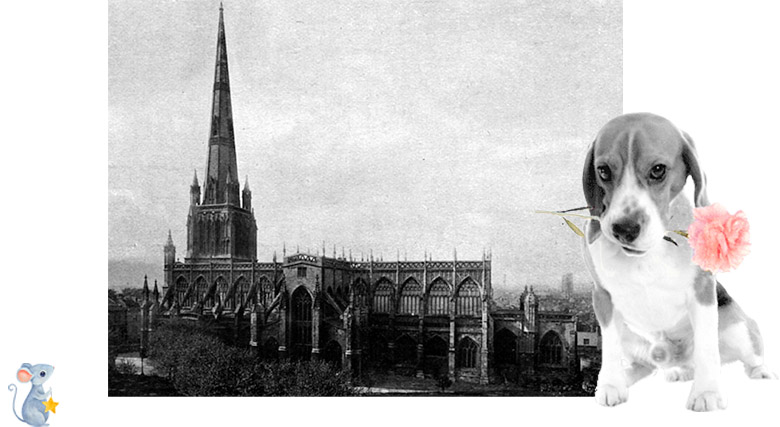
Everything I’m about to share with you happened in England and France during the lifetime of Thomas Jefferson, while America still had its “new baby” smell.
The English poet Samuel Taylor Coleridge gave us “The Rime of the Ancient Mariner” in 1798, while Napoleon sailed to Egypt to fight the Battle of the Pyramids and famously discover the Rosetta Stone.
Coleridge died of heart failure due to his opium addiction.
Wordsworth gave us “The Rainbow” in 1802, while the people of France enthusiastically approved a new constitution that elevated Napoleon to dictator for life.
Wordsworth died of a lung infection.
Shelley gave us “Ozymandias,” the tale of a fallen and forgotten emperor, in 1818, while Napoleon languished in exile on the island of Saint Helena in the Atlantic.
Shelley died in a boating accident at the age of 29.
Keats gave us “La Belle Dame sans Mercy,” meaning “The Beautiful Girl without Mercy,” (let us call her Fame & Fortune) in 1819, while Napoleon continued to languish on Saint Helena.
Keats died of tuberculosis at the age of 25.
You’ve often heard the names of Coleridge, Wordsworth, Shelley, and Keats, but did you know that each of these English Romantic poets was inspired by an imaginary 15th-century monk named Thomas Rowley?
But imaginary through he was, Thomas Rowley re-ignited the flames of romantic literature in England during the colorful years that he lived in the mind of an adolescent boy in poverty.
That boy, Thomas Chatterton, was born 15 weeks after his father died in 1752, when Thomas Jefferson was just 9 years old. Napoleon would not be born for another 3 years.
Little Thomas spent his days with his uncle, the sexton of the church of St Mary, Redcliffe, where he would crawl through the attic of that vast, ancient building, examining the contents of oak chests stored there since 1185, where documents as old as the War of the Roses lay forgotten.
By the time he was 6, young Thomas Chatterton had learned his alphabet from the illuminated capitals of those documents. By the time he was 11, Thomas had become so well-versed in the language and legends of earlier centuries that he began sending poems to “Felix Farley’s Bristol Journal,” claiming they were transcribed from the writings of a monk named Thomas Rowley who had lived 300 years earlier.
Aside from the hundreds of poems written by this imaginary monk, Chatterton wrote political letters, song lyrics, operas and satires in verse and prose. He became known to the readers of the Middlesex Journal as Decimus, a rival of Junius, that author of the forever infamous Letters of Junius. Chatterton was also a contributor to Hamilton’s Town and Country Magazine, and the Freeholder’s Magazine, political publications supportive of liberty and rebellion.
While the brilliant submissions of Thomas Chatterton were happily accepted by editors across England, he was paid little or no money for them.
On the 17th of April, 1770, 17-year-old Thomas Chatterton penned a satire he called his “Last Will and Testament.” In it, he hinted that he was planning to end his life the following day.
That famous poem by John Keats, “La Bella Dame sans Mercy,” may well have been written with Thomas Chatterton in mind. For the beautiful, merciless girl in that poem is a fairy woman – let us call her Fame & Fortune – who makes love to a medieval knight in his dreams, then leaves him sick and dying on a cold hillside when she abandons him.
Four months after writing his “Last Will and Testament” Thomas Chatterton was so much absorbed in thought while walking in St Pancras Churchyard, that he did not notice a newly dug grave in his path and tumbled into it. His walking companion helped Chatterton out of the grave, joking that he was happy to assist the resurrection of a genius.
Chatterton replied, “My dear friend, I have been at war with the grave for some time now.”
Three days later, broken-hearted that he had not been able to support his destitute mother by making money as a writer, 17-year-old Thomas Chatterton, that strange and solitary boy whose poems would inspire a generation of English Romantic poets, committed suicide by drinking arsenic.
But wait. It gets worse. A few days later, a man showed up at the London house in which Thomas Chatterton had lived in the attic. This man was Dr. Thomas Fry, a literary scholar who had discovered that young Thomas Chatterton was not merely the transcriber of a supposedly long-dead English monk, but was, in fact, the author of all the remarkable works that were currently whirling through England.
Dr. Fry had come with the intention of becoming Chatterton’s patron, supporting him with a reliable income.
That was 253 years ago.
An often-visited painting hangs in the Tate Museum in London. It was painted by Henry Wallis during the years when English romantic poetry was at pinnacle popularity. The painting is called, “The Death of Chatterton.” In that painting you will notice a pile of shredded paper in the bottom left corner, beneath the dead boy’s hand. Dr. Fry gathered these shreds of paper and reassembled them to find the final poem of Thomas Chatterton. It is currently on display at the Public Library and Art Gallery in Bristol, England.
You can see the painting of “The Death of Chatterton” on page 2 of the rabbit hole.
Indy Beagle will tell you how to get there.
Roy H. Williams